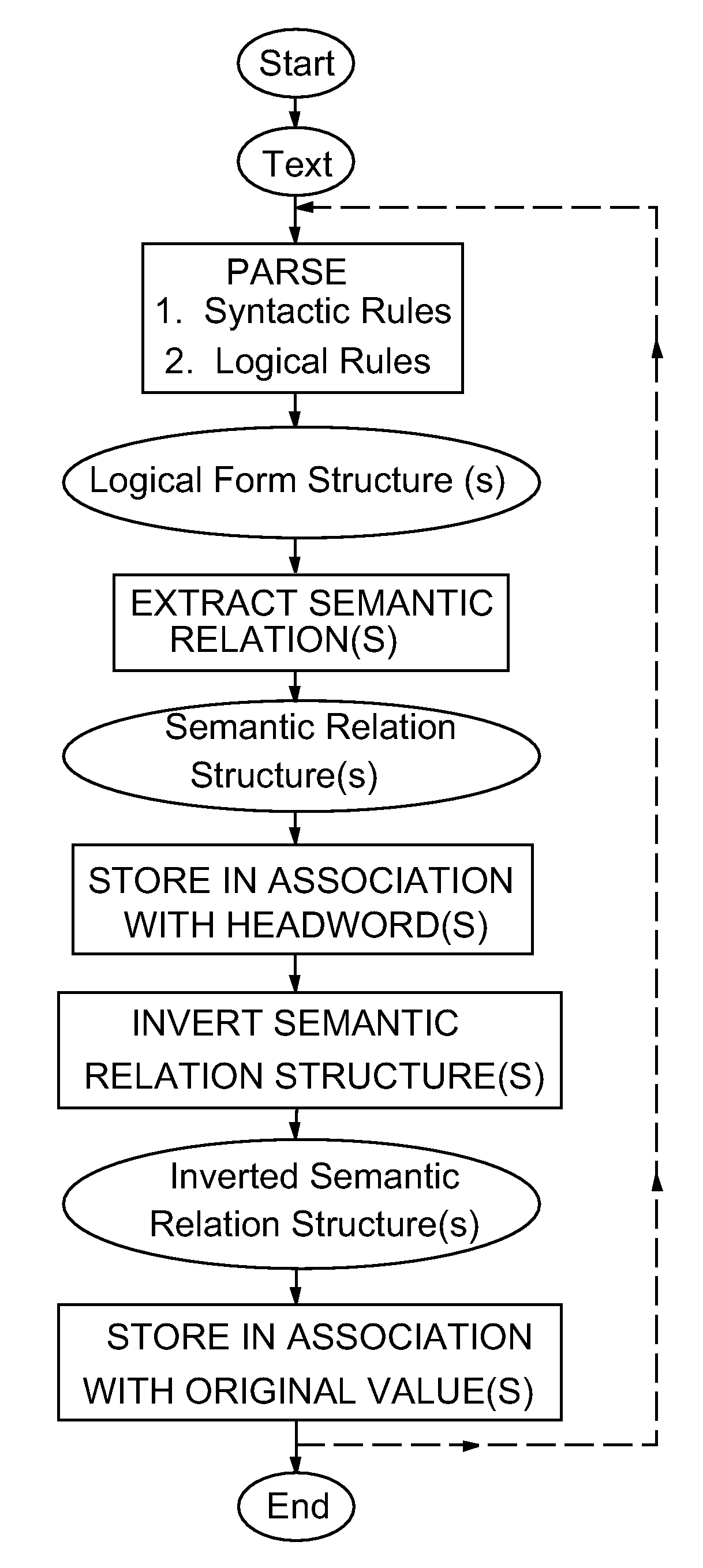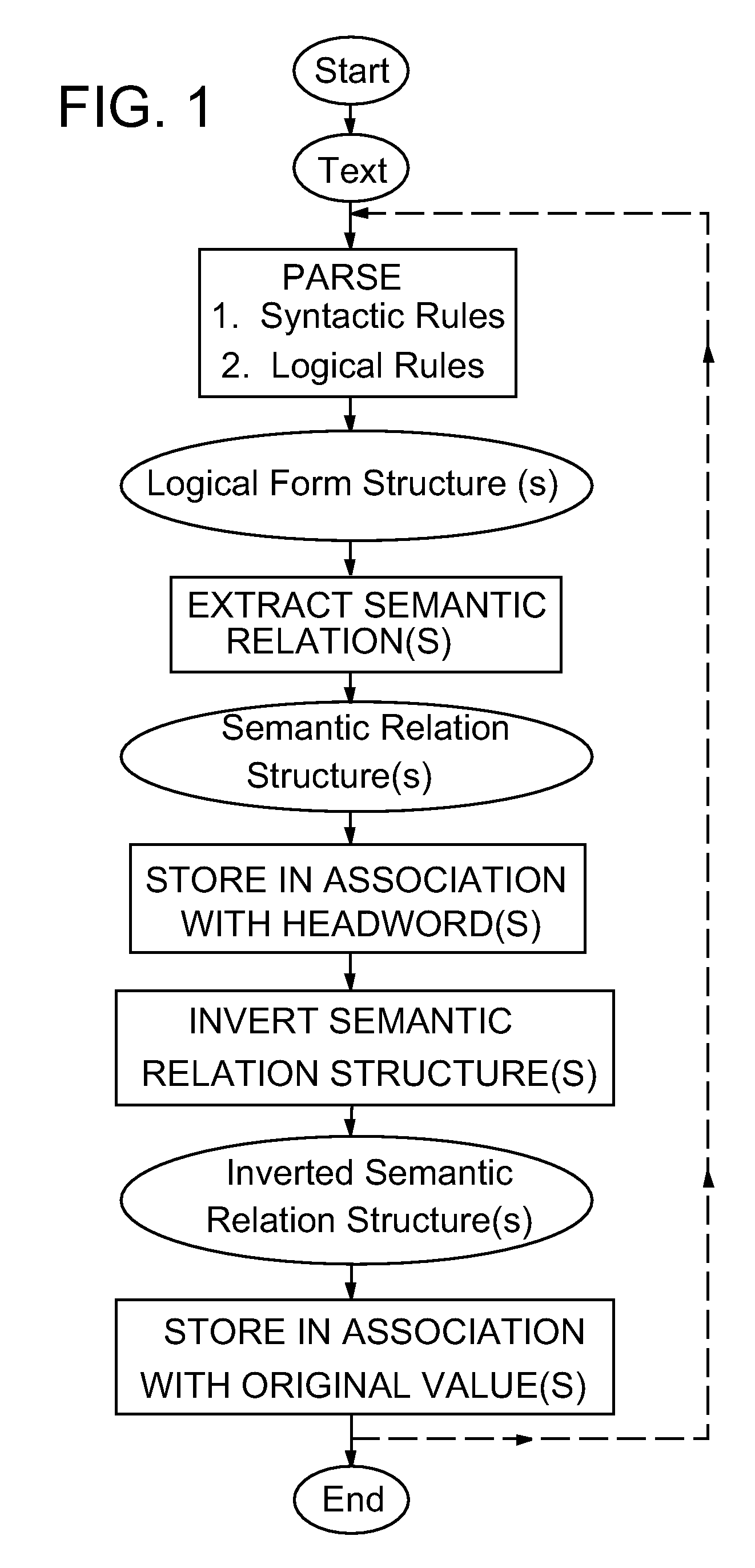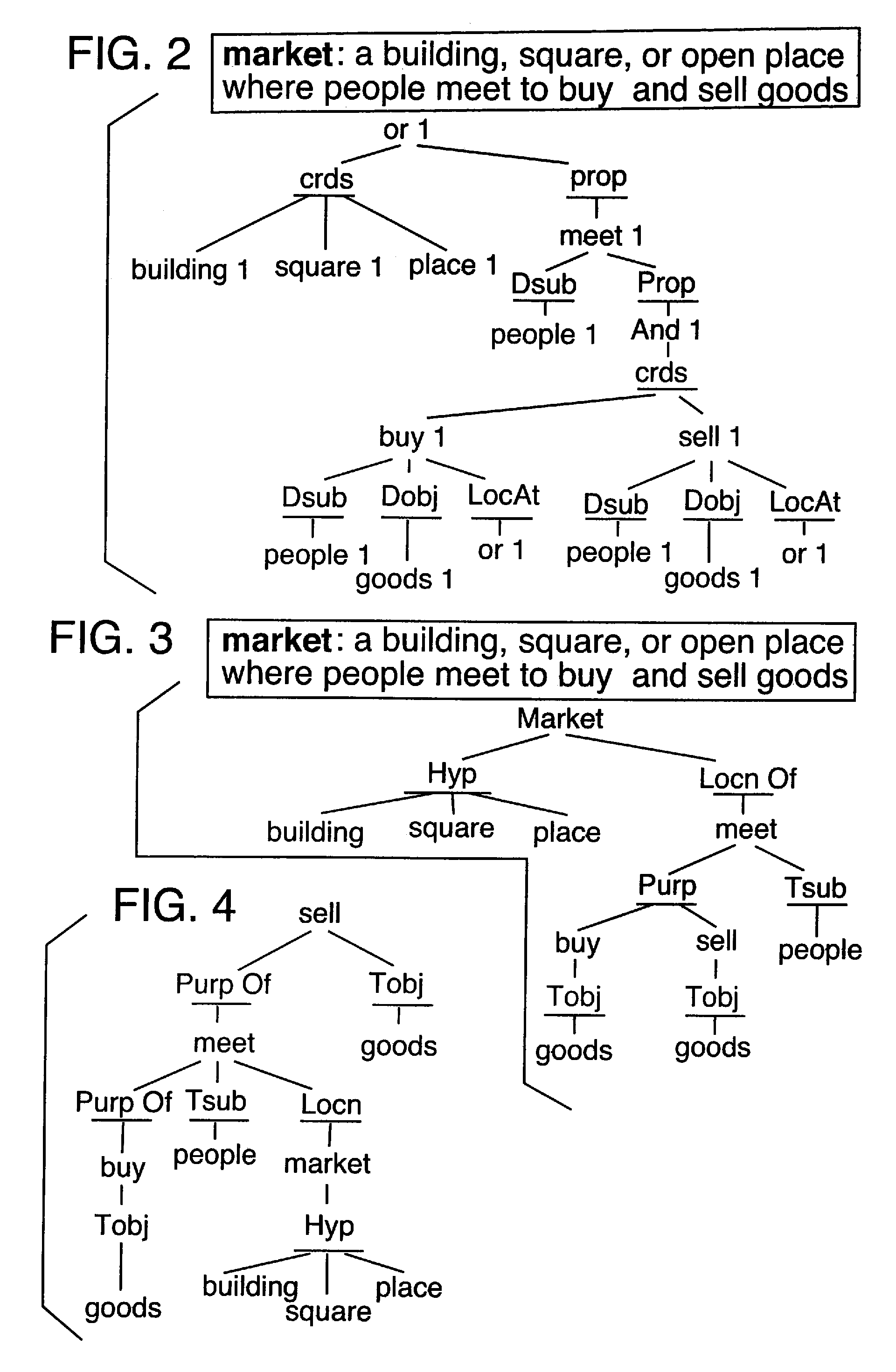Method and system for compiling a lexical knowledge base using backwards-linking natural language processing
- Summary
- Abstract
- Description
- Claims
- Application Information
AI Technical Summary
Benefits of technology
Problems solved by technology
Method used
Image
Examples
Embodiment Construction
[0021]We now describe our use of DB methods to automatically create a semantic knowledge base from an on-line dictionary. Our approach builds on the work of Jensen and Binot (1987) and Montemagni and Vanderwende (1992), and extends it both in quantity and quality of information extracted.
Overview
[0022]Lexical knowledge is poorly characterized by even the best definition of a word. The foregoing example of the definition for “flower” amply proves the point. Humans, by virtue of their ability to understand a definition in the relational context of a well developed prior knowledge base, can intuitively compensate for many such definitional deficiencies. (They know, for example, that a flower has petals, even though the definition of “flower” doesn't say so.)
[0023]A feature of the present invention that seeks to redress this deficiency of each definition taken separately is the notion of “backward linking.” In compiling lexical knowledge associated with the word “flower,” for example, s...
PUM
 Login to View More
Login to View More Abstract
Description
Claims
Application Information
 Login to View More
Login to View More - R&D
- Intellectual Property
- Life Sciences
- Materials
- Tech Scout
- Unparalleled Data Quality
- Higher Quality Content
- 60% Fewer Hallucinations
Browse by: Latest US Patents, China's latest patents, Technical Efficacy Thesaurus, Application Domain, Technology Topic, Popular Technical Reports.
© 2025 PatSnap. All rights reserved.Legal|Privacy policy|Modern Slavery Act Transparency Statement|Sitemap|About US| Contact US: help@patsnap.com



